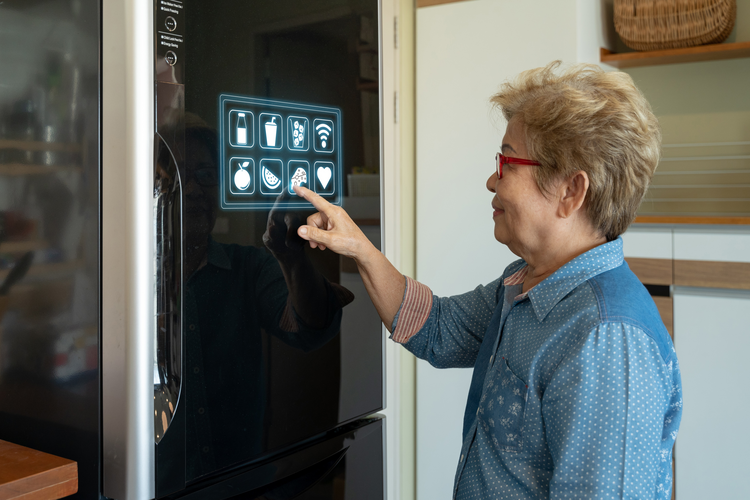These Food Industry Equipment Trends Are Rising in Demand
02 August, 2022

The food and beverage machinery industry is growing exponentially. In the last few decades, there has been a steady influx of technology in the food industry and companies are trying new and innovative strategies to boost their profitability.
Here is a list of the current top trends in the food processing machinery market.
Streamlined Machinery Design and Production Process
The food and beverage industry has streamlined the process of food production across the U.S. Companies are currently focusing on increasing production rates,
Read More : HCME appoint new Ukrainian dealer
minimizing physical labor or the workforce, reducing downtime, dealing with supply chain disruptions, maintaining hygiene and cleanliness, and improving the quality of products. Catering to current trends, manufacturing companies are focused on developing and producing efficient and economical machines.Rise of Contract Manufacturers
Escalated cost of production, inflation, and supply chain hurdles has led to companies trying to reduce production costs across industries. Similarly, food and beverage companies are taking decisive action to save money without affecting the production process.
There has been a surge of contract manufacturers in the food and beverage industry. Partner or contract manufacturers reduce overhead costs, maintain consistency, and also boost profitability for food and beverage organizations. Companies provide the formulas and guidelines, and the contract manufacturers produce the goods while maintaining these guidelines.
Maintenance and Operation Optimization
Businesses need to constantly improvise and innovate to improve their offerings and processes. Food and beverage companies are currently focusing on optimizing their operations to reduce the turnaround time of produced goods. Manufacturers are implementing strategies to make process-level improvements to boost efficiency and reliability.
Food Equipment Market and Key Trends
The global food processing machinery market is expected to expand at a compound annual growth rate of 6.1% from 2021 to 2028. While COVID-19 impacted the food equipment market and its anticipated growth in 2021, there is a renewed demand for processed food in 2022, and the industry is now expected to continue growing steadily.
The methods of food processing include blanching, cooking, coating, and seasoning.
Key Trends
The food equipment market has witnessed technological advancements and innovation in the last few years. With efficient food processing units, companies are producing ready-to-eat processed foods for the market. Other key trends include automation, minimum processing times, and quality control for the food machinery industry.
Regional Outlook
Globally, the Asia-Pacific region will experience the most growth due to a rising population and thus an increase in demand. Countries like India, China, Japan, Australia, New Zealand, and Indonesia have already witnessed rapid growth.
Competitive Dynamics
Competition in the food machinery industry has increased exponentially. Most manufacturers are competing with each other based on machine type, size, features, and technology.
Equipment Trends with Rising Demand in 2022
Technological innovations are reducing costs while increasing the pace of production and efficiency. Professional kitchen equipment trends include the use of touchscreen technology, safe and compact equipment, Bluetooth-enabled units, and utilitarian kitchen equipment. From 2022 to 2029, food service equipment sales are expected to increase by over 5.3%, reaching nearly $62 million by 2029.
Kitchen Equipment with Touchscreen Technology
High-quality touch screen technology or display screens have made buttons and control knobs obsolete. Commercial kitchen appliances come with high-quality advanced touch screen units that can work in humid and hot conditions. Chefs and staff can also use these display screens with wet hands.
Kitchen Equipment That Reduces Labor Cost and Improves Safety
Automation has improved efficiency and productivity. Automation has also significantly reduced labor costs, and even advanced food processing machines can now be operated remotely. In some cases, the maintenance of machines can also be done remotely. This has drastically reduced accidents and improved safety standards.
This year, Stanford engineers built an entirely robot-run kitchen.
Space-saving Kitchen Equipment
Current commercial kitchens are designed for optimal space-saving purposes. Modern kitchens and restaurants have limited available space for operations. To cater to these customers, manufacturers are designing compact refrigeration and cooking equipment.
Kitchen Equipment with Bluetooth Technology
Bluetooth technology allows end-users to monitor vital statistics like temperature, humidity, cook times, power, and preset recipes. With Bluetooth technology, users can also avoid physical exertion.
Utility Cost-saving Kitchen Equipment
Utility cost-saving kitchen equipment increases efficiency and reduces costs. These utilitarian and straightforward kitchen appliances are designed to perform effortlessly.
Expect More Productivity
Market trends in food equipment are positive due to changes in its various governing factors. Technological advancements like automation, Bluetooth technology, and touchscreen technology have increased efficiency. Steps have been taken for streamlining the production process, which has in turn reduced the turnaround time.
Useful Links:
Source: www.thomasnet.com
